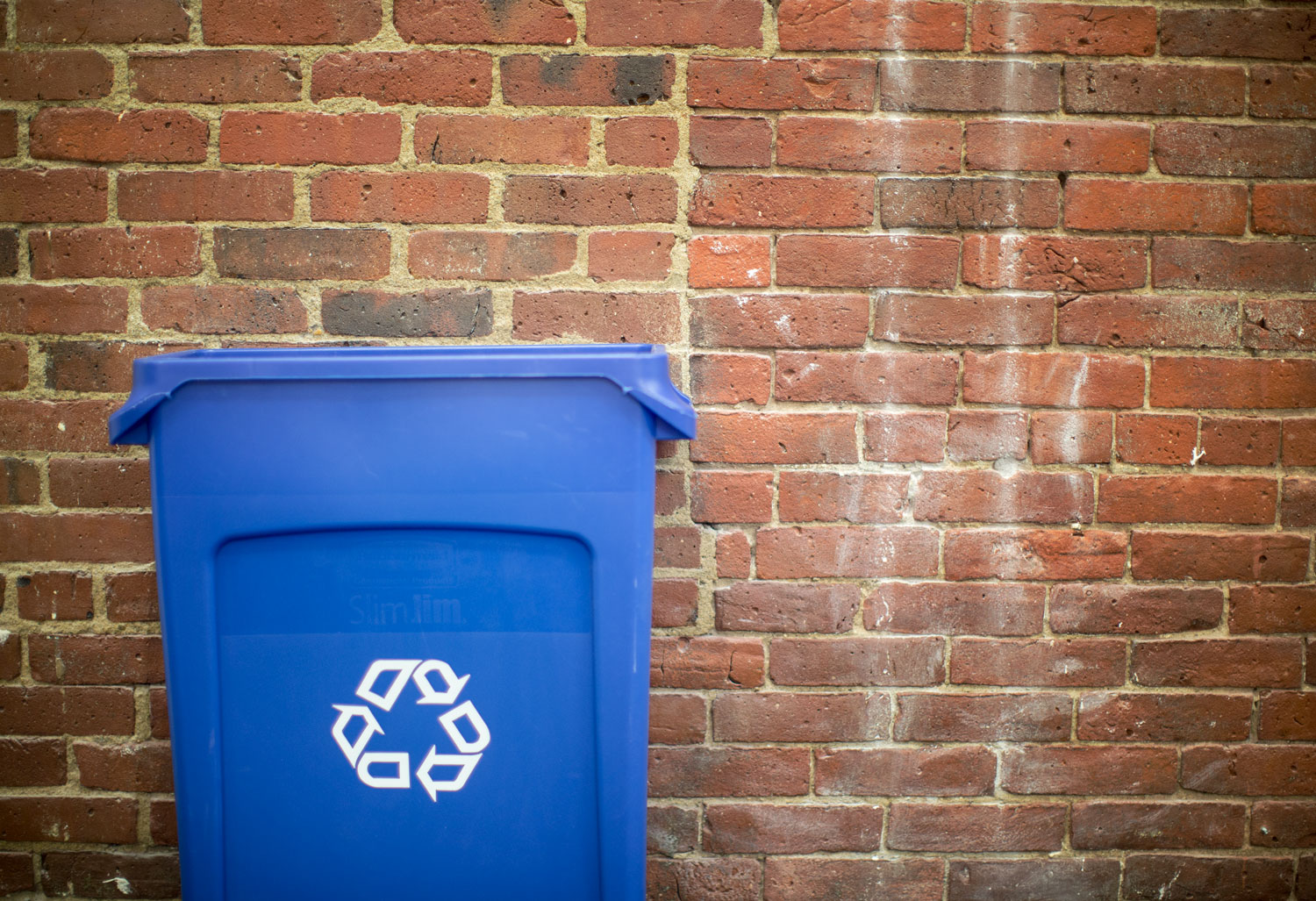Did you know that 88% of consumers are likely to be more loyal to your brand or organization if you demonstrate environmental or social responsibility? Becoming a conscious company has never been easier! Here are five ways your organization can go green in 2021.
Experts agree that 2021 will be the year of climate action. Federal and state governments are setting climate goals with ambitious targets (just look at New York’s Climate Leadership and Protection Act!), and corporations like Google and Amazon are setting a global example by investing in renewable energy and committing to carbon neutrality.
But you don’t have to be Google to take climate action. If we’re going to mitigate the climate crisis, we have to look at small-scale community action. That’s why small and medium-sized organizations and businesses around the country are finding ways to support the movement for a greener future. New York-based nonprofits, including Anderson Center for Autism and the Children’s Home of Poughkeepsie, are setting an example by switching to solar and encouraging those in their communities to do the same.
No matter where you look, for-profit and nonprofit organizations are taking action — and for good reason! Studies show that 88% of consumers are likely to be more loyal to your brand if you support environmental or social causes and that 92% of consumers are more likely to trust your organization. What’s more, prioritizing sustainability is linked to higher employee morale.
Table of Contents
“88% of consumers are likely to be more loyal to your brand if you support environmental or social causes — and 92% of consumers are more likely to trust your organization.”
All it takes is one organization to set the standard in your community. So, how do you make 2021 the year of sustainability for your organization? Here are five things you can do.

Offset Your Carbon Emissions or Paper Usage
We’ve established that more and more businesses are becoming privy to their environmental impact — especially when it comes to carbon emissions and deforestation. In cases where you can’t directly reduce your environmental impact, you can work to offset it by planting trees.
Planting and replanting trees could be one of the most overlooked climate solutions of our time. Trees play an instrumental role in maintaining global temperatures by absorbing heat and carbon dioxide. According to the Arbor Day Foundation, the average tree absorbs 48 pounds of atmospheric carbon dioxide in its lifetime — that’s enough to offset emissions from 24 lbs of coal! Organizations like One Tree Planted, We Forest, and the Arbor Day Foundation partner with businesses and communities to help offset their carbon footprints and contribute to a better world.
Partner with Sustainable Organizations in Your Community
Social distancing and Zoom meetings may continue to be the norm in 2021, but that doesn’t mean you can’t make new connections! We know that communities are stronger when they work together toward a shared goal. To commit to prioritizing sustainability, try to create a support system.
Start by making a list of sustainable organizations or companies in your community, and identify how best to reach out to them. Take advantage of your co-workers’ or members’ connections. Ask your member base or employees if they know anyone who works in recycling. How about solar? Or water conservation?
Brainstorm ways that you can build partnerships with sustainable organizations. Think, “What does your organization have to offer? If you own a pizza restaurant, maybe you partner with a local food co-op and offer a free pizza to anyone who becomes a co-op member.
In turn, consider ways that your partners can help your organization achieve its sustainability goals. Let’s go back to the pizza restaurant example. By sourcing your ingredients from a local food co-op, you’re minimizing emissions from shipping while supporting local agriculture, and (most likely) reducing plastic packaging. Talk about green goals!
If you want to take your partnerships to the next level, you can do some simple calculations to get quantifiable, impressive results. Having numerical results to showcase helps your employees, supporters, customers or member base reap the benefits of going green.
Essentially, calculating your results helps to showcase your initiative and maximize your efforts. In today’s digitized world, we’re all looking to set ourselves apart. Instead of just sharing the same industry-related articles, you would now have an actual partnership and sustainability initiative that you can turn into social media posts, blog posts, or press releases.
If you’re the pizza restaurant, you could calculate how many pounds of tomatoes you use per week. To do this, find out where the tomatoes originated from before they go on the shelves at the grocery store. Determine the distance traveled and the (approximate) amount of gas used. Convert that into metric tons of carbon using the EPA emissions calculator. Do the same for the food co-op, and then subtract that number from the grocery store number. There you have it! That’s your weekly environmental impact.

Take Steps to Improve Energy Efficiency
Whether your team is on-site or remote, you can take steps to become more energy-efficient together. If you are still operating a storefront or an office, here are some easy ways you can use less energy in your building:
Install LED Light Bulbs: LED light bulbs can last 8-10x longer than traditional CFL bulbs, which saves you money.
Get a Smart Thermostat: Smart thermostats like NEST allow you to schedule your temperature changes and track your energy usage online or by using a mobile app. For example, if you know you won’t be in the building from 10 pm to 10 am, you can set the thermostat so that it automatically goes down to, say, 60 degrees. This will save you money while reducing your energy consumption.
Upgrade Your Insulation: If you can swing it, opt to improve the building’s insulation. While not the simplest option on our list, it’s an investment that will pay off in the long run. Experiencing drafts? You can also improve your building’s insulation by purchasing draft blockers for your windows and doors.
If, like many businesses right now, you’re operating remotely, there are still ways you can improve your energy efficiency! You can send energy-efficiency kits to your employees with smart thermostats, LED lights, and draft blockers for windows and doors. This is not only a great social media opportunity, but it will show employees or members of your organization that you care. It will save them money, help them to reduce their environmental impact, and will create real results for the planet.

Make Recycling and Composting Easy
Recycling and composting are two hassle-free ways to lessen your environmental impact. Although recycling may seem like the bare minimum, lots of organizations don’t offer it or do it properly. Even something as mainstream as recycling can be a way to show your employees or visitors that you care. Studies indicate that involving employees in sustainable practices boosts morale and increases productivity.
Putting up signs that explain what type of waste goes in which bin is a great way to provide structure, alleviate confusion, and position your organization as an environmentally-conscious one.
It doesn’t have to include just glass, paper, and plastic. Your organization can provide collection bins for e-waste so employees or visitors can bring in old phones, tablets, computers, and other electronic devices. You can initiate company “field trips” to recycling facilities, dumps, or drop-off sites (again, a great social media op) or designate one “drop-off” person per month.
It doesn’t stop there! You can really set yourself apart as an organization by having a compost bin for left-over lunch scraps or food scraps. Compost not only reduces plant waste from ending up in the landfill, but it also turns into healthy soil that you can put back in your community. Find the nearest compost drop-off site and designate a team member each month to drop it off once it’s full. Worried about the smell? Leaving it in the freezer takes care of that!
Not to sound like a broken record here, but make sure to quantify it if you want something to show for! Weigh the amount of compost you deliver each month. Saying, “We donated 240 lbs of compost in 2021” sounds a heck of a lot better than saying, “We compost.”

Source Renewable Energy
2020 saw a 45% increase in corporate renewable energy procurement — the main reason, being that its cost is now equal to or cheaper than traditional energy sources like fossil fuels! Your organization can actually save a good deal of money by sourcing clean energy from offsite or onsite locations. Here’s how:
On-site or Rooftop Solar For those with the capital and time to commit to a big clean energy win, consider installing solar onsite at your organization. Not only is it a huge money-saver in the long run, but it can also significantly add to the value of your property. Plus, if going green is your goal, installing solar panels on your property is a great way to show others that you are serious about sustainability.
Community Solar Community Solar connects homeowners, renters, and business owners to energy from an offsite solar farm. When you enroll in Community Solar, you get allocated a portion of a solar farm based on your monthly electricity usage and receive electric bill credits for the electricity your panels produce. It works in a subscription model the same way Netflix does! Instead of giving you access to movies and TV shows, Community Solar makes clean energy accessible to folks who are unable to put solar panels on their roofs.
Energy Service Companies (ESCOs) ESCOs (a.k.a. third party energy providers) provide options for alternative energy sources outside of your utility. If an energy project is deregulated, ESCOs intervene to sell the energy at a fixed price, essentially serving as intermediaries between the developers and the utilities. Both Community Solar lets you stick with your utility for both supply and delivery, while ESCOs replace the supply charges on your utility bill with their own. ESCOs can be a great option for organizations looking to go green, but be warned: ESCOs have been known to increase prices over time. Just make sure you do your research, find reviews, and read the fine print.
Solar Heat Pumps When it comes to ditching fossil fuels, switching to electric heat is an impactful step that will help you save money and the environment. Although replacing your fossil fuel heat system with a solar heat pump can be expensive, it can also pay for itself in less than a year. Solar heat pumps use 50% less energy than traditional heating systems, and most folks save hundreds of dollars a year. Plus, solar heat pumps are quieter than natural gas heaters (goodbye creaky, scary furnaces).
There you have it! Thanks for reading our non-exhaustive list of ways your business or organization can go green. Ready to make 2021 the year you make an impact and inspire change?
Like learning about community solar?
Join our monthly newsletter to hear about more renewable energy news and bold climate challenges.




